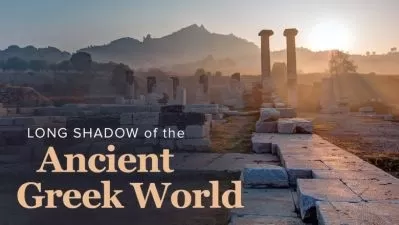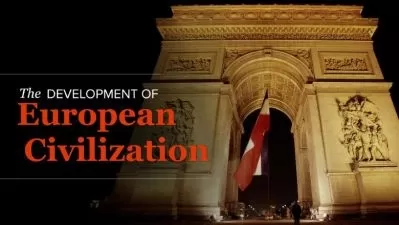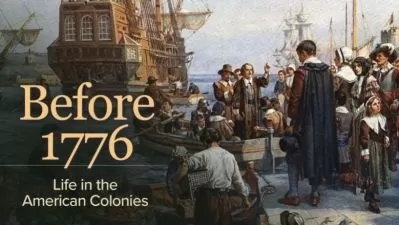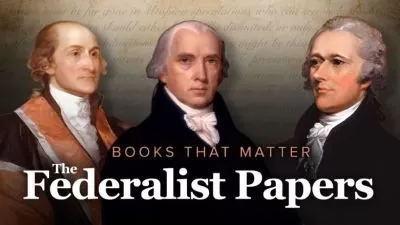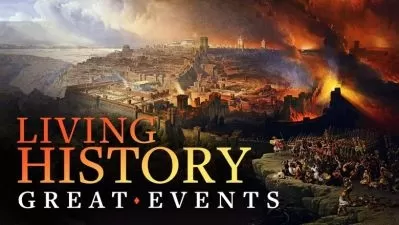Fall of the Pagans and the Origins of Medieval Christianity
Kenneth W. Harl
12:32:28
Description
Why did pagan Rome, which had a history of tolerating other faiths, clash with early Christians? What was it like, under Roman law, to be a Jew or a Christian? What led to the great persecutions of Christians? Above all else, how did Christianity ultimately achieve dominance in the Roman Empire, eclipsing paganism in one of the most influential turning points in the history of Western civilization?
Answers to these and similar questions are important for the sheer fact that much of today's world is still governed by principles drawn from the Judeo-Christian heritage that gained primacy as a result of Christianity's triumph over the paganism of ancient Rome. Two thousand years after this earth-shattering change, many of these principles still determine how most of today's Western world—both Christian and non-Christian alike—thinks about ethics, sin, redemption, forgiveness, progress, and so much more.
Discover the true story behind this ethical and religious legacy with The Fall of the Pagans and the Origins of Medieval Christianity, a historically focused discussion of the dramatic interaction between Judaism, Christianity, and paganism from the 1st to the 6th centuries. Presented by Professor Kenneth W. Harl of Tulane University—an award-winning teacher, classical scholar, and one of the most esteemed historians on The Great Courses faculty—these 24 lectures allow you to explore in great depth the historical reasons that Christianity was able to emerge and endure and, in turn, spark a critical transition for religion, culture, and politics.
An All-Encompassing Picture of a Critical Era
While the Judeo-Christian values that have shaped society's ideas are ones we might today take for granted, their emergence from an ancient era dominated by loyalties to a vast array of gods would once have seemed the most unlikely of narratives. Even after the Roman emperor Constantine converted to Christianity in A.D. 312, it would not be until the 6th-century reign of Justinian that medieval Christianity would emerge and this new historical pathway would finally be confirmed.
Professor Harl's magnificent course enables you to grasp the full historical sweep of this monumental transition by creating an all-encompassing picture of this critically important era. While some philosophical and theological content is included to clarify important points of transition, the focus of The Fall of the Pagans and the Origins of Medieval Christianity is—above all else—on its most important and fascinating episodes, among which are these:
- Emperor Nero's rescript in A.D. 64, which not only ordered the persecution of Christians in the city of Rome but also made the faith illegal throughout the empire. As the first religion ever banned in the Roman world, Christianity would be forced to develop new institutions and new ways of spreading its message.
- The Battle of the Milvian Bridge in A.D. 312, where Emperor Constantine won a victory described in the only two literary accounts—both written by Christian authors—as having been deliberately fought under the Christian symbol of the Chi Ro. Professor Harl offers a probing analysis of what he believes Emperor Constantine's real motives were for fighting in this battle.
- The reign of Theodosius I (A.D. 379 to 395), under which laws were passed banning public sacrifice throughout the Roman Empire and making Christianity the only legitimate religion. This crucial reign, according to Professor Harl, signified not only the death knell of Roman paganism but the first steps in the creation of the persecuting society of medieval Europe.
New Insights into the Sources of Western Beliefs
The Fall of the Pagans and the Origins of Medieval Christianity also introduces you to a wide variety of individuals whose actions helped shape the history of this turbulent time, including these:
- Rulers like Augustus and Justinian, whose decisions would define—and redefine—the relationship between paganism, Judaism, and Christianity and how Jews and Christians would subsequently respond through words, deeds, and rituals
- Proselytizers for the new faith, including James and Paul, and the different viewpoints they represented in the development of early Christianity
- Religious thinkers such as Clement and Origen, who would go on to become the first theologians of the emerging Christian faith
- Ascetics such as Saint Anthony and Barsauma, a warlike monk said to be so terrifying that he could inspire conversions in the villages of Syria and Phoenicia through the sheer fear raised by his arrival
- Philosophical thinkers such as Galen, who was also a noted pagan critic of the new Christian faith and thus an active participant in the exchanges with Christian apologists that served to educate and hone the arguments put forth by both sides
You'll also witness Christianity's growing influence on not only the visual arts (including architecture and the redesignation of pagan temples for Christian uses) but on the world of letters, including, ironically, the preservation of the classical writings of ancient Greece so important to understanding the pagan world.
A Masterful Historian, an Exceptional Teacher
Professor Harl is the ideal choice for crafting such an all-encompassing picture of this critically important era. In addition to garnering honors for his skills as a lecturer—which include two-time recognition as the recipient of Tulane University's Sheldon Hackney Award for Excellence in Teaching, voted on by both students and faculty—he regularly leads students to Turkey on educational excursions or as assistants on excavations of Hellenistic and Roman sites.
His own photographs of temples and other architectural features, cult statues, coins, and other telling artifacts bring the history and the events in this course to vivid life. Combined with a rich array of other visual aids, including maps, illustrations, and animations, these features help make The Fall of the Pagans and the Origins of Medieval Christianity a vibrant trek through the past—one that will lead you to a deeper understanding of the bedrock beliefs of Western culture.
More details
User Reviews
Rating
Kenneth W. Harl
Instructor's Courses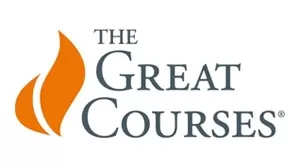
The Great Courses
View courses The Great Courses- language english
- Training sessions 24
- duration 12:32:28
- English subtitles has
- Release Date 2023/05/09






